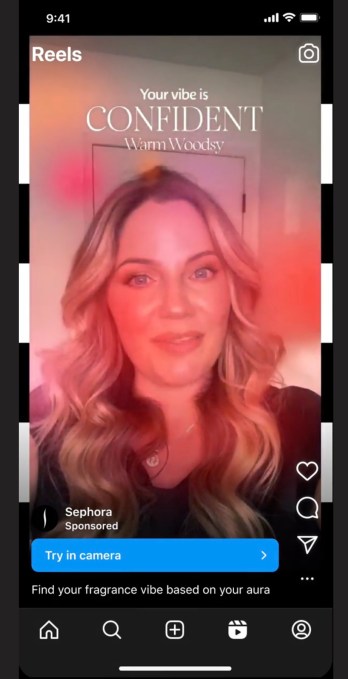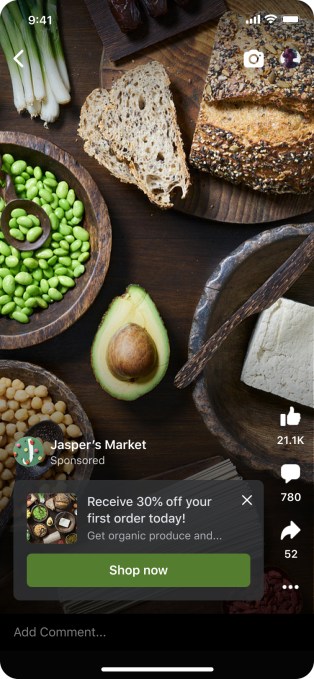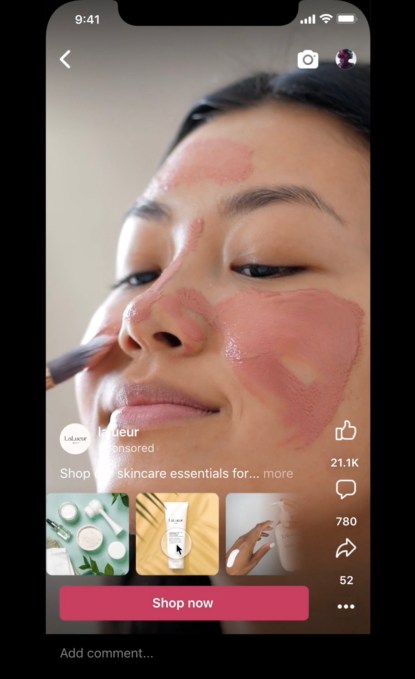Augmented reality is coming to Reels Ads and Facebook Stories, Meta announced this afternoon on the IAB’s NewFronts as part of its pitch to advertisers. With the update, brands like Sephora, Tiffany & Co. and others provide more immersive experiences and AR filters when marketing to Meta’s audience, including the younger Gen Z users. The company said it is also rolling out other enhancements and enhancements to Reels ads and that well-known brands can now work with third-party measurement partners for their Reels ad campaigns.
Meta’s investment in augmented reality (AR) advertising could better position the company to compete with Snap for marketers’ advertising dollars as they look for ways to reach the younger, Gen Z demographic. Earlier this week at NewFronts, Snap introduced its own suite of new ad products, including those for Stories and its TikTik clone, known as Spotlight. But the more glaring news was the test of sponsored links in its AI chatbot feature, My AI.
However, on the AR front, Snap has long provided ways for brands to reach their users through the format, including through a variety of AR commerce features and the popular Snapchat Lenses. It also works with brands that want to use its AR technology on their own websites and apps through the AR Enterprise Services division.
Prior to today’s announcement, Meta served AR ads in the Facebook Feed, Instagram Feed, and Instagram Stories. According to the data, these ads drove incremental ad recall 87% of the time in the 18- to 24-year-old demographic, outperforming non-AR ads.
Now those ads can appear in other prominent places on the Meta platform, including Facebook and Instagram Reels and Facebook Stories.
Sephora was able to test AR Reels ads prior to this launch, where it showed an ad where users pressed their thumb against the screen to generate an “aura vibe” filter to help them choose the best-fitting scent and to make a purchase. The company said more than half of the ad’s audience were Gen Z users.

Image Credits: meta
Tiffany & Co. also created an AR ad that allows users to immerse themselves in their 5th Avenue flagship store, “The Landmark,” and browse the jewelry.
In addition to expanding AR ads, Meta announced features to make Reels Ads more interactive, including testing a larger call-to-action button with additional advertiser information on Facebook and Instagram Reels ads. The button contains an ad thumbnail, headline, and additional business information, such as the website URL, to help interested customers click.

Image Credits: meta
The company also now allows Facebook users to pause a video ad and preview where the link would take them, potentially leading to an increase in click-through rates for Reels ads.
For shopping ads, Reels is introducing new multi-destination product ads, meaning that instead of an ad pointing only to a retailer’s website or a single product page, they can swipe through multiple product images in a carousel without leaving the Reel they’re viewing.

Image Credits: meta
Meta also said marketers can now partner with select third-party measurement firms for Reels Ads campaigns, including Double Verify, IAS, and MOAT. The company said these companies are helping it test and launch a Reels Viewability reporting option that will later be rolled out to advertisers when testing is complete.
The company also took a moment during the presentation to pitch its investments in AI, noting that it uses the technology to improve ad rank by learning which ads are working and which aren’t, and to better predict which ads will be most likely to hit. become relevant.
“It also promotes the efficiency of a range of advertising products, eliminating many of the manual and tedious steps involved in creating an ad,” said Nicola Mendelsohn, Head of Global Business Group at Meta. She added that Meta’s investments are “already paying off, especially with Meta Advantage, our brand name for our portfolio of AI products. Meta Advantage leverages machine learning and AI to help advertisers test and learn, as well as deliver their campaigns quickly and help them acquire and grow their customer base.”
Mendelsohn said most Meta advertisers were already using an AI product, Advantage+ Shopping, which only launched last August. Advertisers used to have to manually set up a campaign to text their mix of targeting, creative and placement, she explained, which was time-consuming. Now advertisers can use Advantage+ Shopping campaigns to run millions of iterations of targeting performance scenarios in milliseconds, allowing them to choose the best combination to send the best ad to the right person at the right time – all thanks to AI.
“This is just the beginning of how AI can create better connections with people and drive more growth for your business. And we will continue to see more and more product updates and announcements about AI in the coming weeks,” she said.
The company had also talked about its AI agenda during its Q1 earnings call, also noting how AI improved monetization efficiency with Reels, which grew by more than 30% on Instagram and more than 40% on Facebook quarter-over-quarter. had risen. Additionally, CEO Mark Zuckerberg also shared that Meta’s future plans for AI include “chat experiences in WhatsApp and Messenger, visual creation tools for Facebook and Instagram posts and ads, and video and multimodal experiences over time.”